
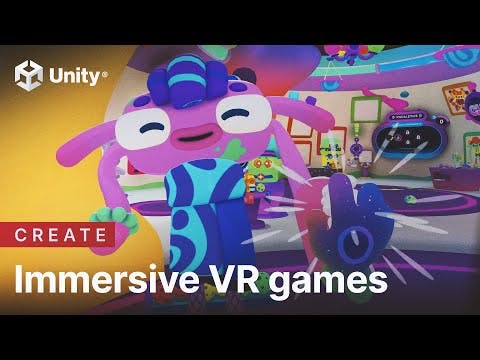
Unity for VR game development
How to make a VR game
Access guides, courses, and samples that can get you started with how to create a VR game.

Learn VR development
For anyone getting started, this learning pathway is designed for anyone interested in creating experiences for VR.
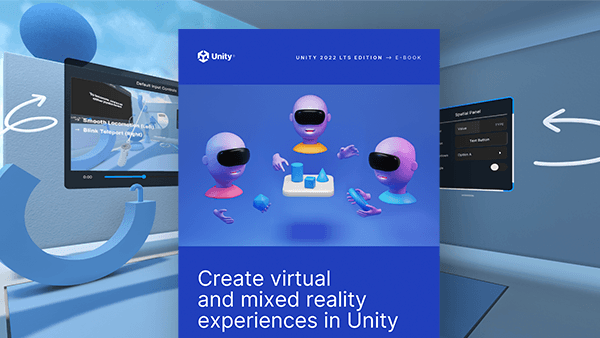
Get advanced tips
Download the e-book to get practical tips for working with the VR template in Unity, the XR Interaction Toolkit, Apple Vision Pro and visionOS, and much more.

Build Multiplayer VR
Using Unity Gaming Services, Netcode For GameObjects, and XR Interaction Toolkit, you can build multiplayer VR games quickly and seamlessly.
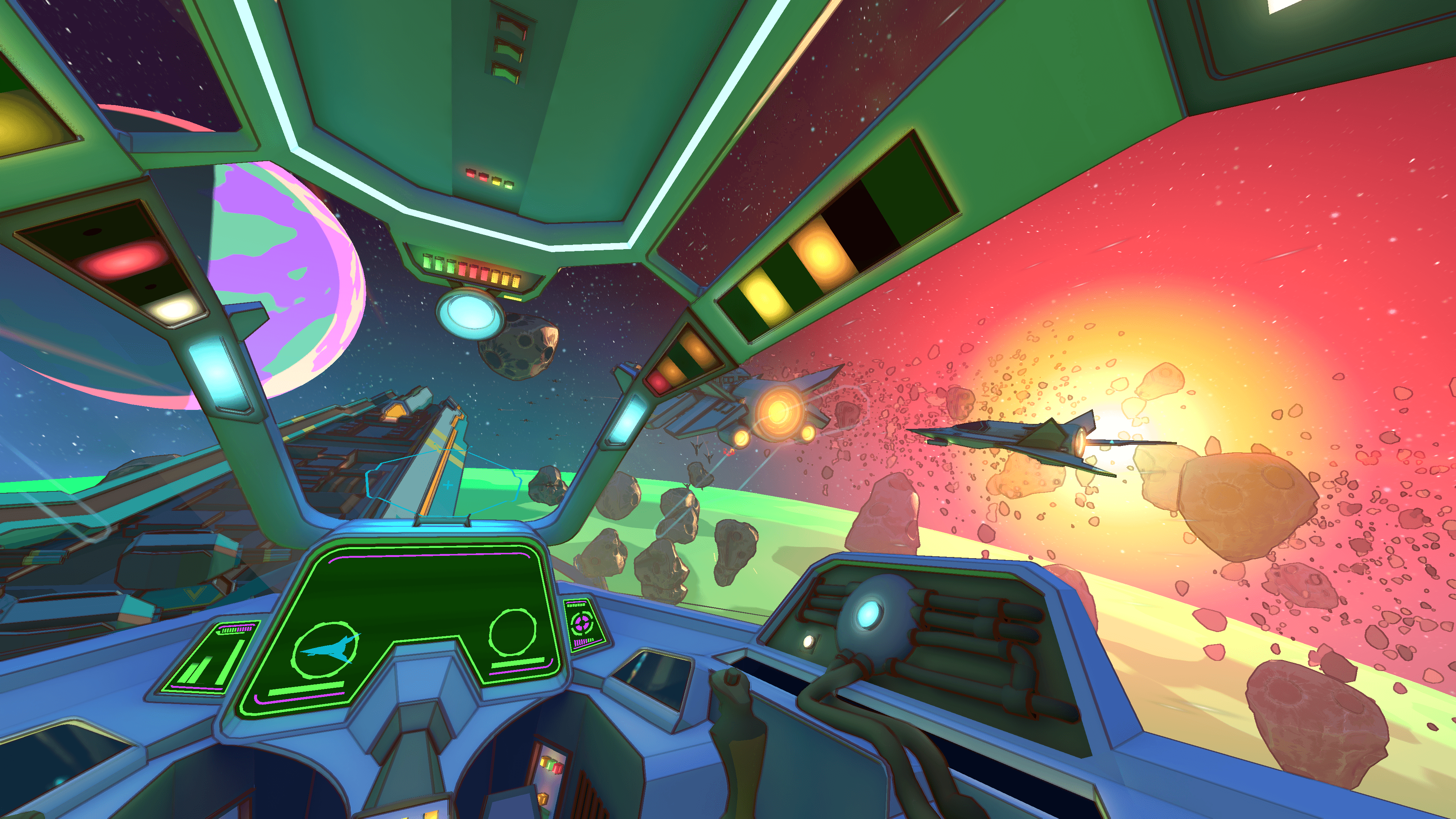
Visual tips for VR
Performance is crucial for delivering seamless gameplay in VR. But how do you start integrating VR support into a Unity project?
VR games made with Unity
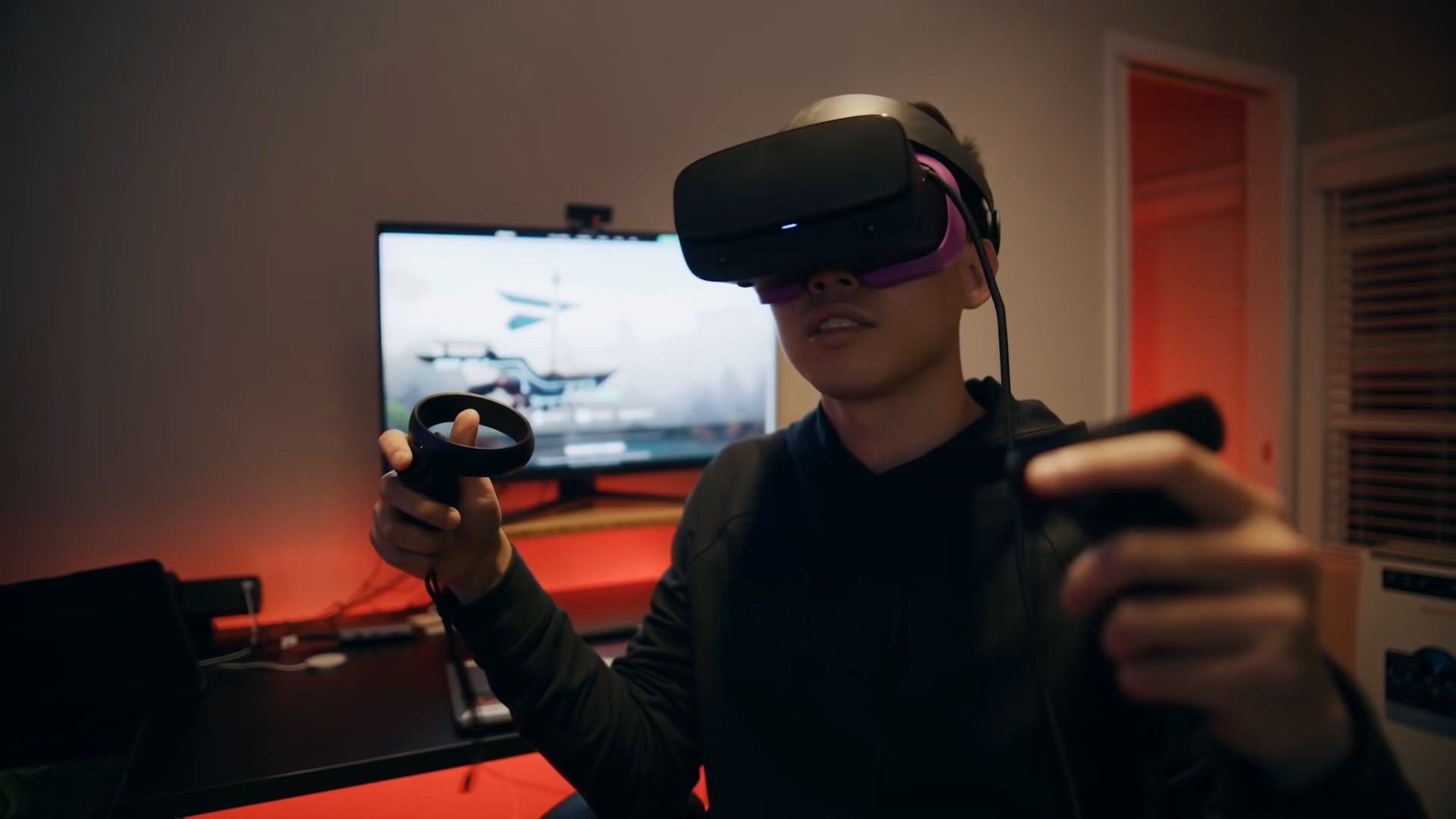
Zenith: The Last City
How does a small, remote team create a massively multiplayer online role-playing game in VR?

Synth Riders
How does a studio reimagine a beloved title for Apple Vision Pro that melds their cyberpunk aesthetic with Apple’s minimalistic and colorful design?

Among Us VR
Watch our stream with Schell Games as we look behind the scenes of the hit game Among Us VR.
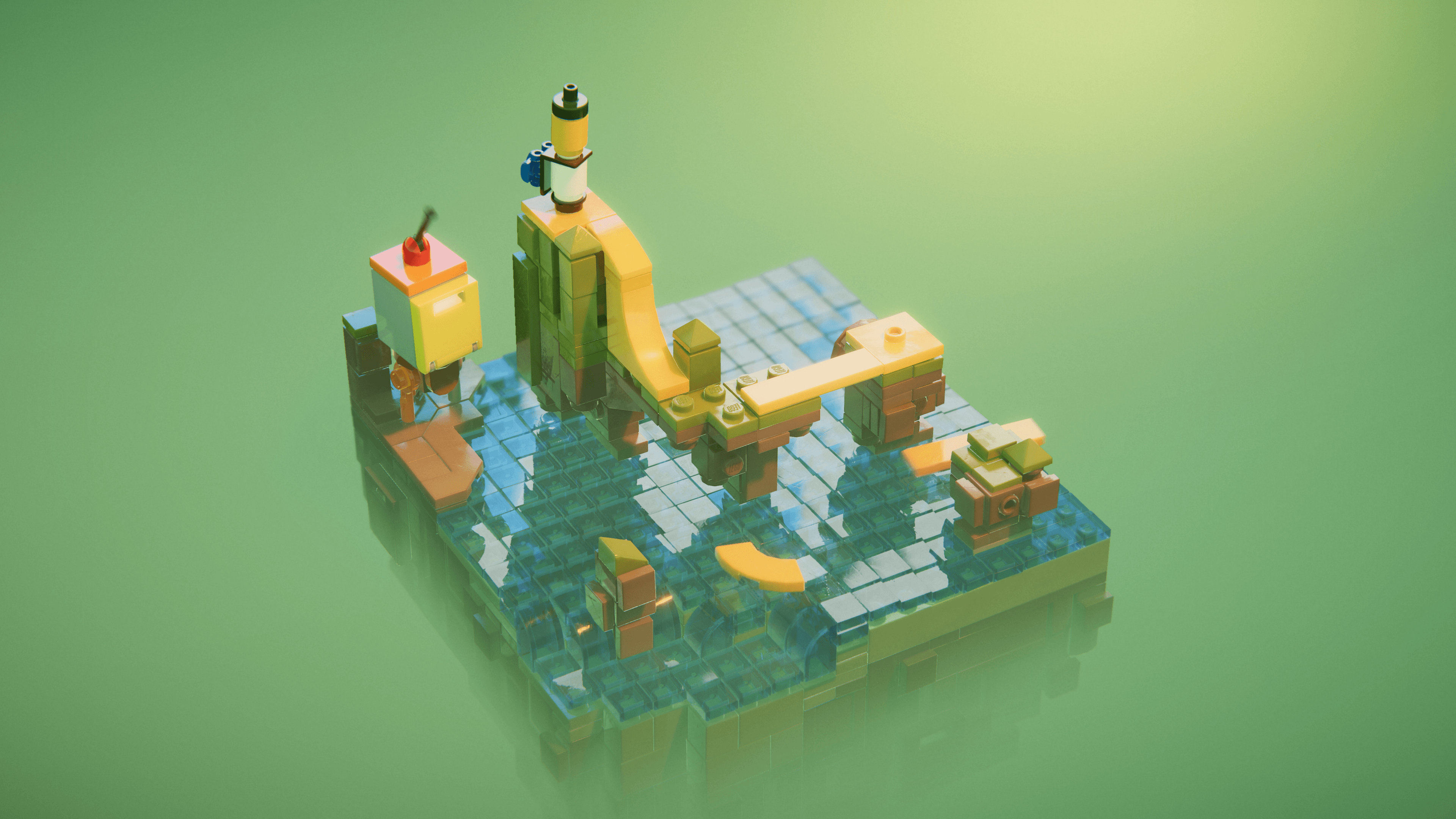
LEGO® Builder’s Journey
How a team of six ported LEGO® Builder’s Journey to Apple Vision Pro in just three months.

Universal Render Pipeline
Universal Render Pipeline (URP) lets creators at all levels express their vision, while still ensuring a high degree of extensibility and great customization capabilities. URP provides the performance needed for the demanding nature of VR development.

XR Interaction Toolkit
The XR Interaction (XRI) Toolkit package is a high-level, component-based, interaction system for creating VR and AR experiences. It provides a framework that makes 3D and UI interactions available from input events, cross platform XR controller inputs, haptics, visual feedback, basic canvas UI, and more.

Visual Scripting
Visual Scripting in Unity helps to create scripting logic with visual, drag-and-drop graphs instead of writing code from scratch. It enables more seamless collaboration between programmers, artists, and designers for faster prototyping and iteration to accelerate your VR game and app development process.
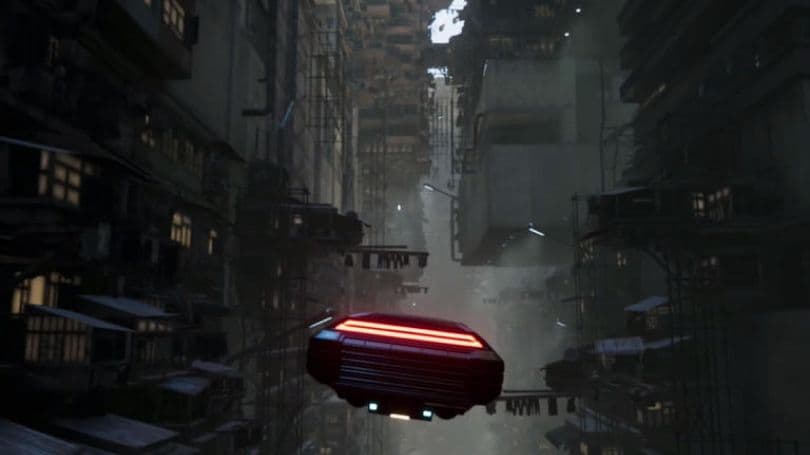
DOTS for advanced devs
With Unity’s high-performance, multithreaded Data-Oriented Technology Stack (DOTS), you can take full advantage of multicore processors. Advanced developers and studios can use DOTS to build even more performance into their games.
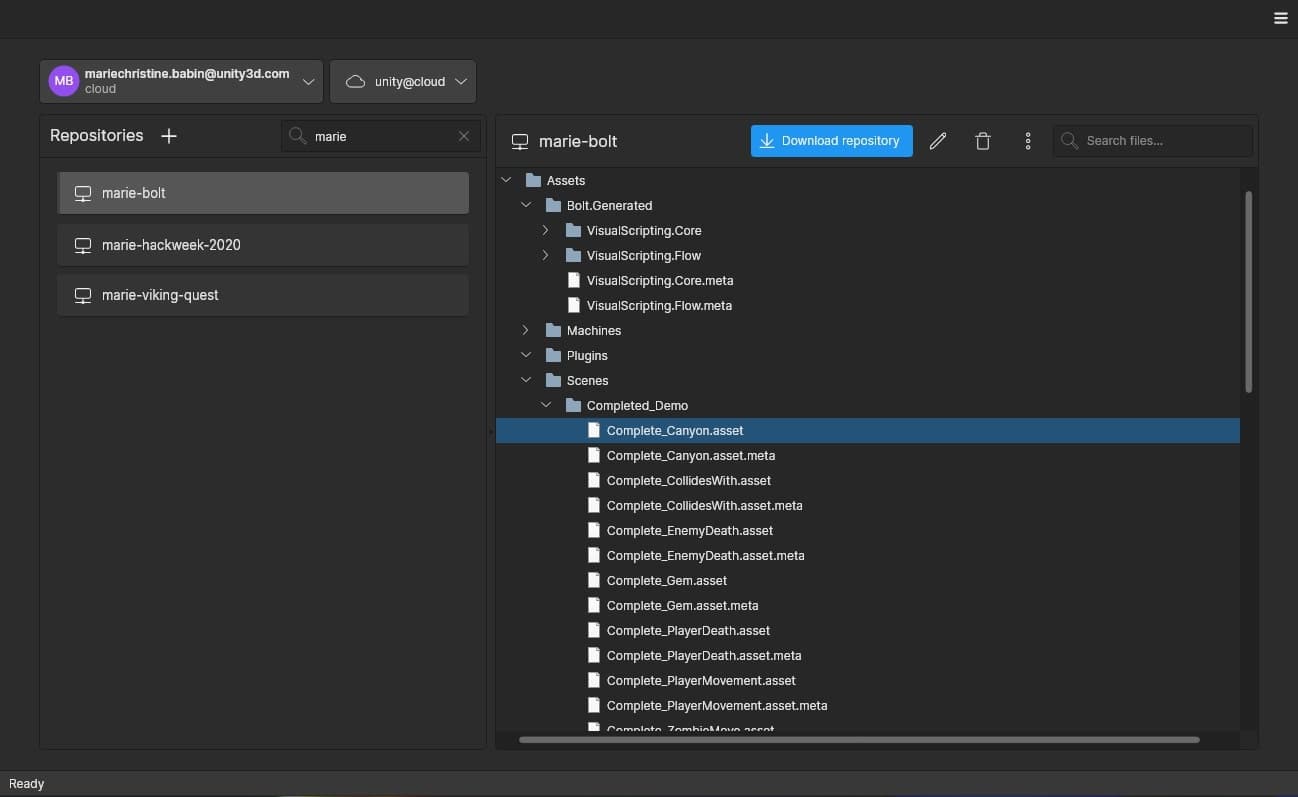
Unity Version Control
Unity Version Control is a version control and source code management tool built to improve team collaboration and scalability when building for VR. It offers optimized workflows for artists and programmers, as well as superior speed working with large files and binaries.

Unity Asset Store
Save time and money by leveraging assets made by creators, for creators. With the Unity Asset Store, you can minimize subcontracting and build your game more quickly. Check out top VR-ready assets and SDKs.

Discover how Unity’s ecosystem of tools and services can help you develop amazing VR experiences.
Disclaimers
- Source: Vision Pro Beta Participants . Disclaimer: Engine information for apps is identified using internally available data
- Source: Meta Quest Store. Disclaimer: Most Popular as reported by Meta. Engine data for apps is identified using a combination of SteamDB, IGDB and Valve APIs, and internal sources.
- Source: Quest Store. Disclaimer: Engine data for apps is identified using a combination of SteamDB, IGDB and Valve APIs, and internal sources.